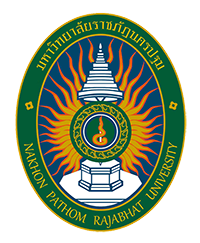 การประชุมวิชาการระดับชาติ ครั้งที่ 16
|
| Title | Handmade Paper from the Barks of the Rubber Tree |
|---|---|
| Other Titles: | กระดาษทำมือจากเศษเปลือกต้นยางพารา |
| Authors EN |
|
| Authors TH |
|
| Keywords | Handmade Paper,The Barks of the Rubber Tree |
| Issue Date | 13-Aug-2024 |
| Publisher | The 16th NPRU National Academic Conference Nakhon Pathom Rajabhat University |
| Abstract | The objective of this research is to investigate Study the process for making handmade paper from wasted rubber tree bark and Analyze the physical properties of handmade paper created from leftover rubber tree bark. The study is focusing on two types of raw materials which used in different proportions: rubber tree bark scraps of RRIM 600 variety and Mulberry paper. The ratios tested are 90:10, 80:20 and 70:30 of rubber tree bark scraps to mulberry tissue, respectively. Standard paper of 100 grams is manufactured, and the experiment is conducted in 5 replicates. The paper properties are analyzed, including tensile strength and elongation according to ASTM D828-22(E) standard, and tear resistance according to ISO 1974-2012(E) standard. Additionally, the external characteristics are inspected by six qualified individuals, including two academics, two producers and two distributors. The research findings indicate that the paper produced with a ratio of 90:10 exhibits the highest average tensile strength at 0.70 kilonewtons per meter. For elongation, the paper with a ratio of 70:30 demonstrates the highest average at 2.10%. In terms of tear resistance, the paper with a ratio of 70:30 shows the highest average at 2,923.62 millinewtons. The analysis of paper properties reveals that the paper exhibits favorable characteristics. Regarding external appearance assessment, one expert prefers the paper with a 90:10 ratio the most. They state that the paper is thicker and has the darkest shade, making it suitable for packaging and potentially for developing into wallpaper. Five other experts favor the paper with a 70:30 ratio the most. They note its thinness, consistent light yellow color, and exceptionally light weight. They highlight its excellent ability to rolls up neatly and become loosen quickly, suggesting its potential for artistic endeavors.
|
| ISBN | 978-974-7063-46-2 |
| URI | https://rdi.npru.ac.th/conference16 |